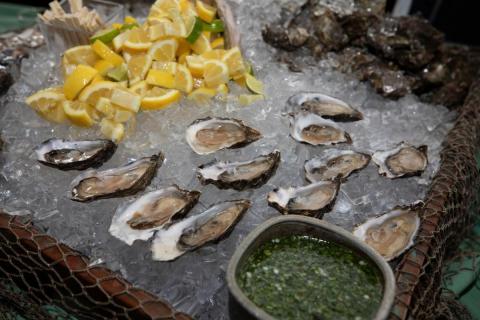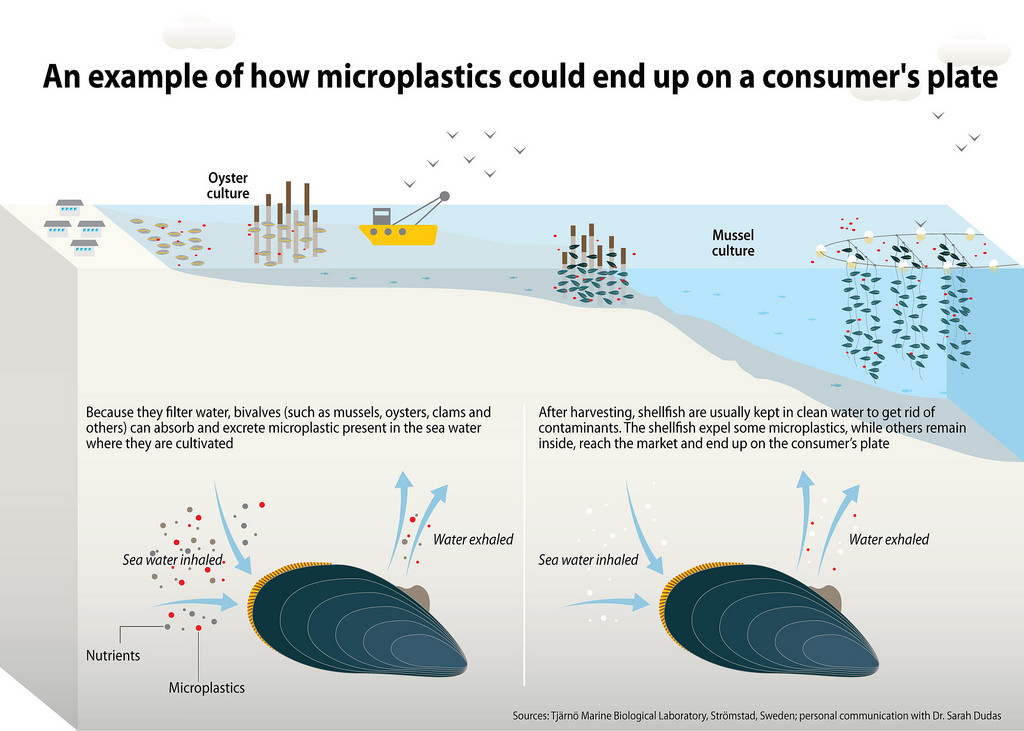
Bivalves, (clams, oysters and mussels), are often on our dinner plates. But when we take a tasty bite, we’re also eating microplastics. These shellfish are filter-feeders, straining plankton from seawater for food. Along with plankton, they’re ingesting microplastic bits.
Scientists have looked in the tissues of several kinds of bivalves to discover the amount and kind of plastic found in these animals. In some places, they’ve found the majority of plastic is overwhelmingly microfibers as these are easily eaten by zooplankton. These microfibers are coming from many places, including our washing machines (!) clothes made from synthetic fibers shed particles. Microfibers also come from other textiles, like tire dust, and larger plastic items that degrade and fragment into microplastic particles in the ocean.
Researchers found nanoplastic (smaller than microplastics) particles in the gills, gonads and other organs of scallops; larger particles
remained in the intestines. In studying the scallops, they found the nanoplastic accumulated rapidly but it took up to 48 days for them to disappear from scallops.
In a study in Britain, samples of wild mussels from eight coastal locations around the UK and eight unnamed supermarkets, showed 100 per cent contained microplastics or other debris such as cotton and rayon.
We Are What We Eat
Our intense use of plastic in everything, including the clothes on our back, is polluting the ocean. Scientists don’t know the impact of microplastics impact human health. Not sure what to eat? Here’s a good idea of bivalves seafood to eat.
Watch this video about researchers looking for – and finding—microplastics in shellfish.
What WE Can Do!
Our friends at the Student Conservation Association also have a good list of action items for us?
TEN ACTION ITEMS for stopping microplastic pollution
- Avoid products with known microplastics like microbeads in face washes and toothpastes.
- Stop using single-use plastics like straws, plastic shopping bags, and plastic drink cups. Think reusable!
- Cut out plastic in your consumption choices wherever you can. One easy switch is to buy soda in aluminum cans instead of plastic bottles. Start with one change at a time to make them stick.
- If you own a business, choose sustainable packaging.
- Write a letter asking your preferred companies to use sustainable packaging. You can also write to your city to advocate for a plastic bag ban. Try a form letter to help you get started.
- Strategically do your laundry. Try to make your synthetic clothes last as long as possible between washes to avoid microfiber pollution. Air them out in the sun or dust with baking soda to help absorb smells.
- Vote for legislation that puts bans or taxes on plastics.
- Join protests against plastic factory pollution.
- Recycle. Start recycling in your community; support recycling in your community; tell your recycling center how much you appreciate their work. Take a tour of your local recycling facility to learn how they work and what materials they do and don’t accept.
- Spread the word. Your friends, family, students, and co-workers joining our efforts will have an even greater impact! For some kid-friendly ocean pollution education, check out Nat Geo Kids.
















